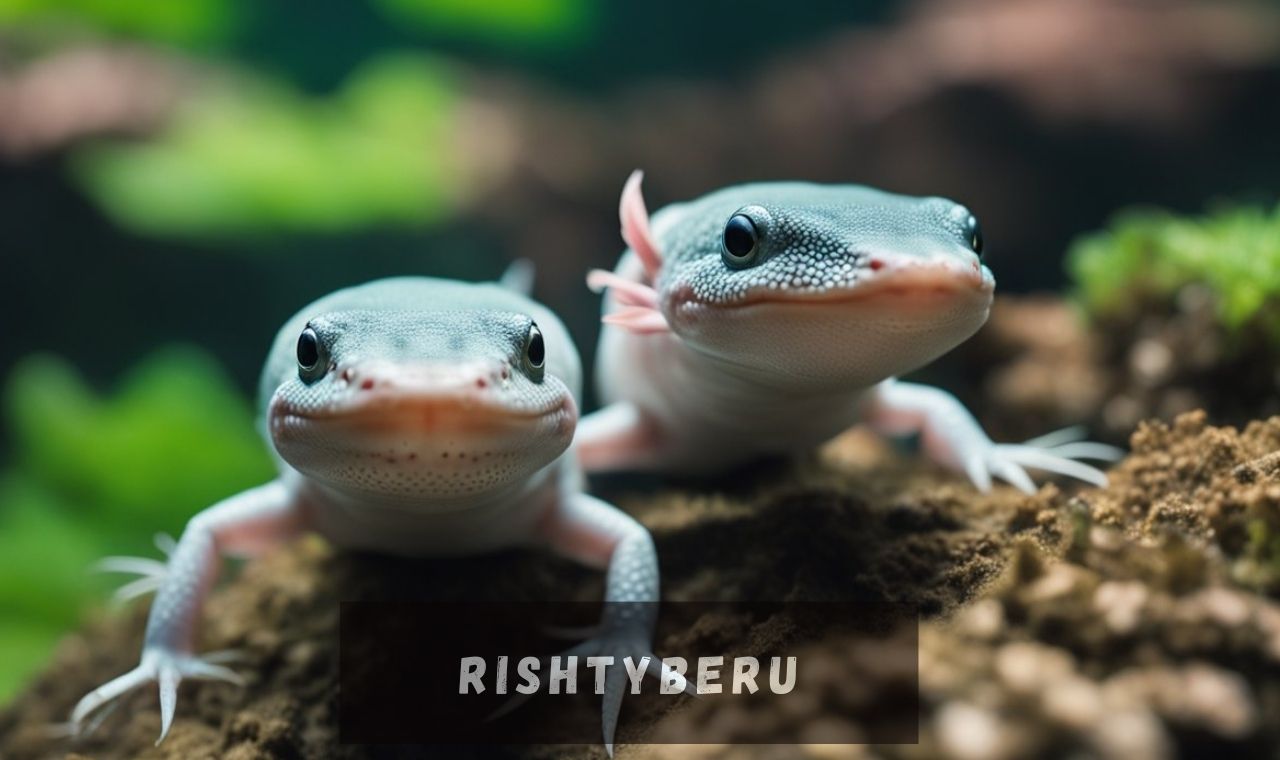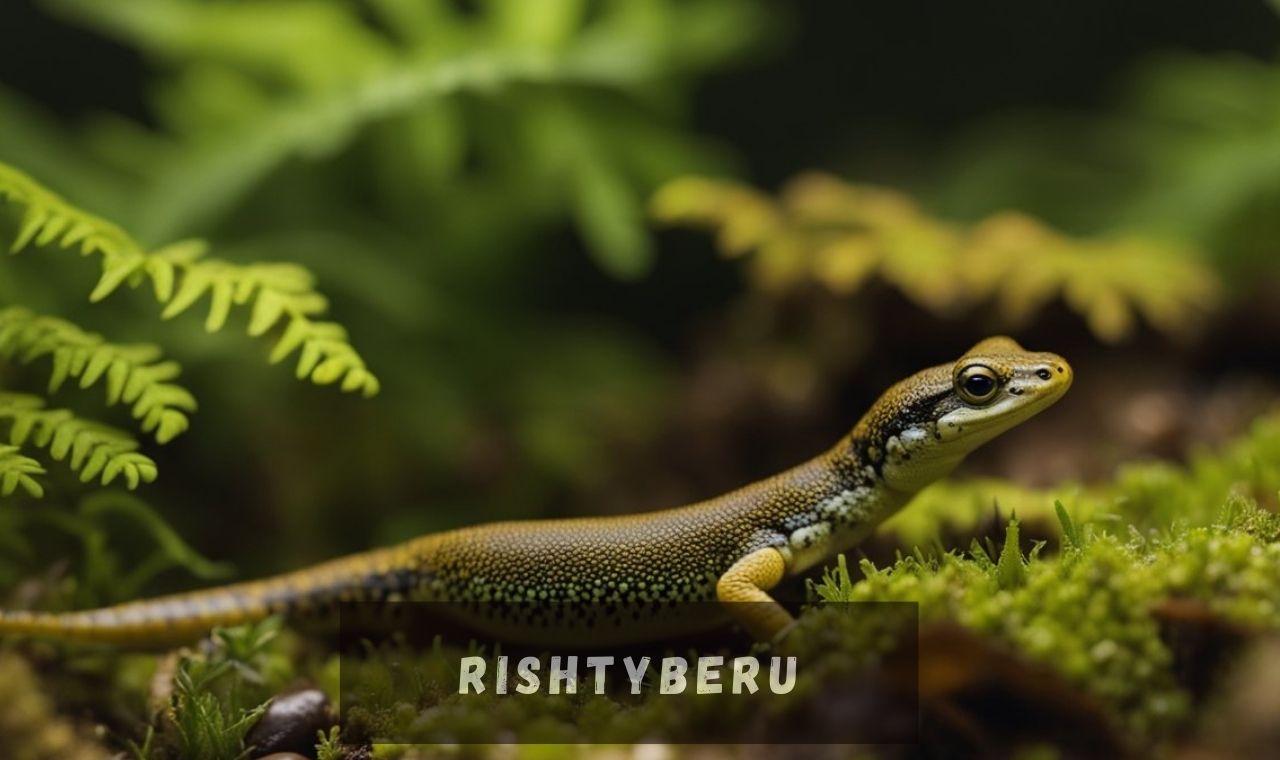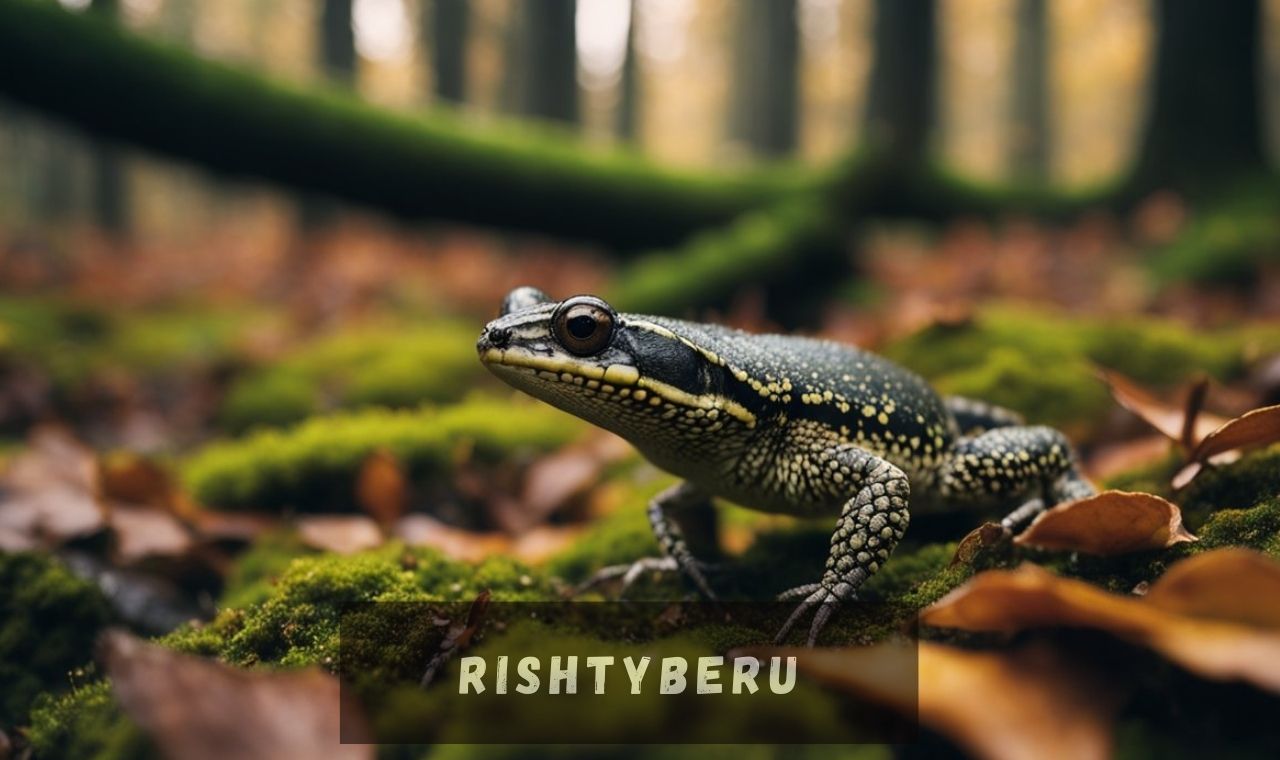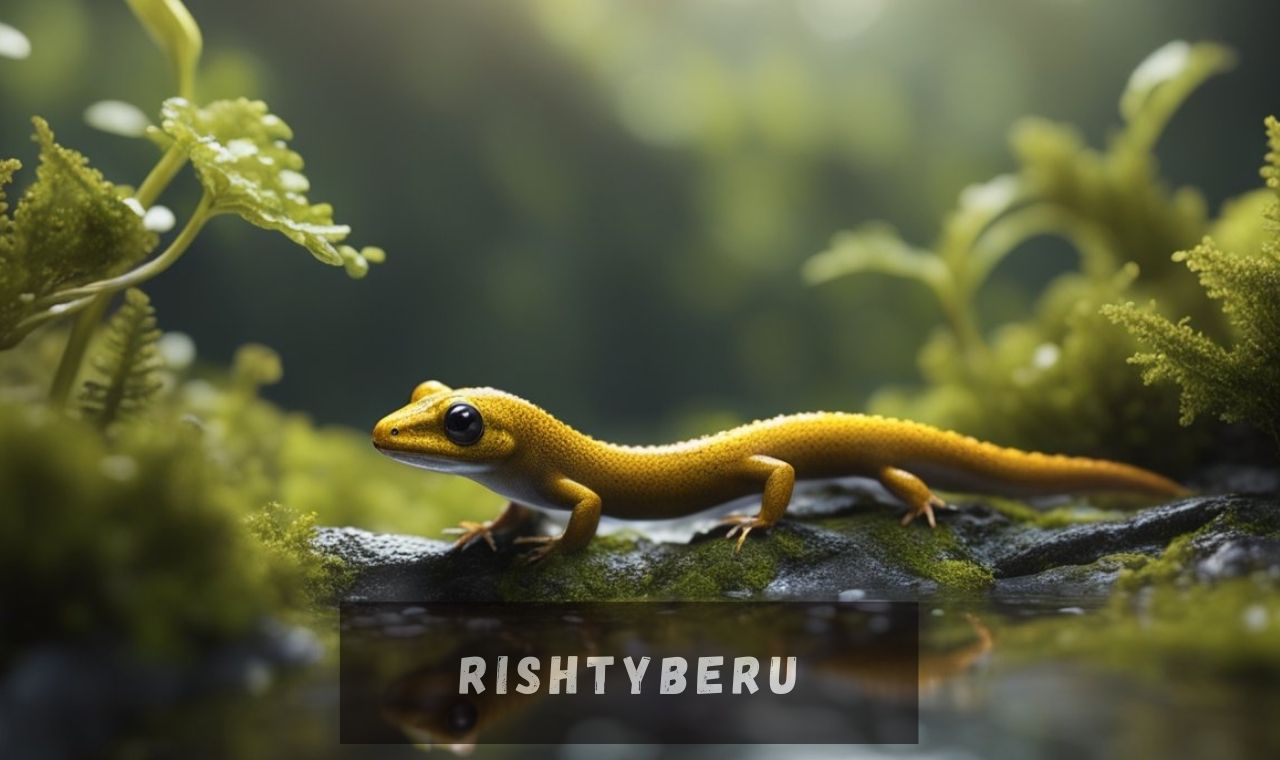Amphibians showcase an astonishing array of species, each with its own distinct traits and adaptations. Within this realm, two standout creatures command attention: the axolotl and the salamander. Despite sharing a familial bond, these amphibians exhibit notable disparities that defy conventional wisdom. What sets them apart? Are axolotls truly as exceptional as they appear? Prepare to embark on a journey through the realms of axolotls and salamanders as we dissect their individual traits, delve into their habitats, provide insights into pet care, and uncover the truth behind selecting the ideal companion – whether it be the axolotl or the salamander. Brace yourself to be captivated by these remarkable beings, also recognized as the “Mexican walking fish”.
Axolotl and Salamander: Definition and Classification
Both the axolotl and the salamander captivate with their amphibious nature. Let’s delve into the specifics of their classification and characteristics.
Axolotl Definition:
Scientifically termed Ambystoma mexicanum, the axolotl is a species of salamander indigenous to the lakes of Mexico City. Often dubbed as the Mexican salamander or Mexican walking fish, it’s important to note that despite its moniker, the axolotl is indeed an amphibian, not a fish.
Salamander Definition:
The term “salamander” encompasses a broader spectrum of amphibians, comprising various species characterized by elongated bodies, slender limbs, and tails. These creatures can be found across the globe, spanning North America, Europe, Asia, and even certain islands.
Classification:
Both axolotls and salamanders find their place within the order Caudata, commonly known as urodeles or tailed amphibians. This order is distinguished by animals possessing elongated tails and adept swimming abilities. Within the order Caudata, axolotls are classified under the family Ambystomatidae, whereas salamanders encompass diverse families such as Plethodontidae, Salamandridae, and Ambystomatidae.
Fun Fact: Axolotls possess a unique trait among salamanders – neoteny, wherein they retain larval features throughout their lifespan, including external gills.
Comparison of Axolotl and Salamander:
Axolotl vs. Salamander: Unveiling the Distinctions
| Category | Axolotl | Salamander |
|---|---|---|
| Habitat | Freshwater lakes in Mexico City | Varies; found in various regions across the globe |
| Appearance | External gills, feathery-like structures | Smooth skin, distinct coloration |
| Behavior | Neotenic, less active | Active, terrestrial or aquatic depending on the species |
As illustrated in the table provided, axolotls and salamanders present notable distinctions in their habitat, appearance, and behavior. Axolotls, known for their unparalleled uniqueness, exclusively inhabit freshwater lakes within Mexico City, boasting distinctive external gills. Conversely, salamanders showcase a diverse range of habitats and display varying physical attributes.
Axolotl: Habitat and Characteristics

Axolotls, those enigmatic creatures renowned for their distinct habitat needs and peculiar physical attributes, beckon us into their watery world. Let us embark on a journey to uncover the secrets of their habitat and explore the depths of their remarkable traits.
The Enigmatic Abode
Native to the freshwater realms of Mexico, particularly the Xochimilco and Chalco regions, axolotls find solace in the cool, well-oxygenated embrace of aquatic habitats. Captivating as they are, these amphibious beings demand meticulous attention to habitat replication in captivity.
Constructing a sanctuary for captive axolotls entails mirroring their natural habitat with precision. An ideal aquarium or tank should boast ample water volume, roughly 10 gallons per axolotl. Furthermore, the provision of hiding havens such as rocks, foliage, and tunnels is paramount, catering to their inclination for exploration and the need for security.
The Mystique of Axolotl Traits
Axolotls don an array of distinctive physical features, setting them apart as anomalies among amphibians:
Ethereal External Gills: Unlike their amphibian counterparts, axolotls retain their ethereal external gills throughout their lifespan. These delicate, feathery appendages protrude from the sides of their heads, facilitating oxygen extraction from their aquatic abode.
Regenerative Marvel: Axolotls exhibit an awe-inspiring prowess for regeneration, capable of restoring lost body parts including limbs, spinal cords, hearts, and even segments of their cerebral mass. Such remarkable regenerative capabilities have garnered substantial scientific intrigue.
Perpetual Youth: Neoteny, a phenomenon exclusive to axolotls, sees these creatures defy the conventional amphibian trajectory. While others undergo metamorphosis, transitioning to terrestrial life, axolotls remain aquatic, preserving their juvenile features—including external gills—into adulthood.
Vibrant Kaleidoscope: Axolotls dazzle with an assortment of captivating hues, ranging from pristine whites to inky blacks, earthy browns, and even the ethereal allure of rare albino variations. Such resplendent colors render them highly coveted as companions, enhancing their visual allure.
Intriguingly, axolotls stand as testaments to nature’s ingenuity, embodying a tapestry of habitat exigencies and physiological marvels. From their freshwater haven predilection to their regenerative prowess, these creatures epitomize the extraordinary amidst the realm of amphibians.
| Characteristic | Description |
|---|---|
| External Gills | Axolotls retain external gills throughout their lives, allowing them to extract oxygen from water. |
| Regeneration Ability | Axolotls have the incredible ability to regenerate lost body parts, including limbs, spinal cord, and even parts of their brain. |
| Neoteny | Axolotls exhibit neoteny, meaning they retain juvenile features throughout their lives, including external gills. |
| Color Variations | Axolotls come in a wide range of captivating colors, including shades of white, black, gray, brown, and rare albino variations. |
Unlocking the Enigmatic World of Axolotls: Mastering Pet Care and Maintenance
In the realm of keeping axolotls as companions, the pinnacle lies in their meticulous care and maintenance, vital for ensuring their vitality and happiness. These enigmatic amphibians possess particular needs that demand attention to thrive within domestic confines.
Creating the Ideal Habitat
Axolotls, denizens of the aquatic realm, necessitate a meticulously curated tank mirroring their natural abode. Here’s a primer for establishing their sanctuary:
- Provision of a commodious tank, with a minimum capacity of 10 gallons per axolotl.
- Installation of a secure lid to forestall any escape attempts, given their adept climbing skills.
- Integration of a robust filtration system to uphold water quality by expunging waste and toxins.
- Maintenance of water temperature within the range of 60 to 68 degrees Fahrenheit (15 to 20 degrees Celsius), given their susceptibility to temperature fluctuations.
- Incorporation of hideouts such as caves or foliage to foster a snug and engaging environment.
Feeding Rituals
Axolotls, being carnivorous creatures, predominantly subsist on live prey. Here’s a digest of essential feeding practices:
- Dispensing a varied diet comprising diminutive live prey like earthworms, bloodworms, and brine shrimp.
- Eschewing large prey items to preclude choking hazards or digestive issues.
- Vigilant monitoring of feeding sessions to stave off overindulgence, as axolotls are prone to obesity.
Nurturing Water Quality
The sustenance of optimal water quality stands as a linchpin for the holistic well-being and longevity of axolotls. Here’s a compendium of maintenance measures:
- Regular execution of water changes to expunge accumulated detritus and uphold water purity.
- Periodic monitoring of water parameters including pH, ammonia levels, and nitrate levels to ensure adherence to appropriate thresholds.
- Abjuration of water conditioners or chemicals containing copper, as it poses toxicity risks to axolotls.
- Maintenance of a pristine tank environment, devoid of detritus or unconsumed food remnants.
Additionally, beyond the basic requisites, individual axolotls may necessitate bespoke care contingent on their distinct health and circumstances. Seeking counsel from a knowledgeable veterinarian or seasoned axolotl aficionado can furnish invaluable insights for furnishing superlative care.
Salamanders Unveiled: A Journey through Habitats and Traits
Embark on an odyssey delving into the beguiling realm of salamanders, unfurling the tapestry of their habitats and distinctive traits. From a plethora of species to their awe-inspiring adaptations, salamanders stand as a beacon of fascination for scholars and nature devotees worldwide. Let us traverse their domains and unravel the marvels concealed within.
The Cornucopia of Salamanders
Salamanders, members of the Caudata order, encompass a staggering array of over 700 known species. These amphibious denizens inhabit diverse corners of the globe, colonizing habitats ranging from lush forests to cavernous depths and even subterranean realms.
Survival Strategies: Adaptations Unveiled
Foremost among the pantheon of salamander traits is their remarkable capacity for regeneration. In the face of predation, salamanders wield the extraordinary ability to regenerate lost appendages, including tails, limbs, and even portions of vital organs such as the heart and spinal cord. This unparalleled regenerative prowess sets them apart as titans within the animal kingdom.
Aquatic versus Terrestrial: Lifestyle Dichotomy
Salamanders manifest a spectrum of lifestyle preferences, with some species thriving in aquatic environs like lakes, ponds, and streams, while others carve out niches in terrestrial habitats such as forests and grasslands. These adaptations encompass variances in physical morphology, behavioral patterns, and reproductive strategies.
Habitat Harmony: A Crucial Nexus
The precise exigencies of diverse salamander species’ habitats wield profound influence over their survival. Variables such as temperature, humidity, water availability, and vegetative cover exert pivotal sway over their comportment, breeding proclivities, and overarching population dynamics.
Chromatic Kaleidoscope: The Artistry of Coloration
From resplendent hues to intricate motifs, salamanders bedeck themselves in a breathtaking palette of colors. These visual embellishments serve multifarious purposes, encompassing camouflage, aposematic signaling, and interspecies recognition. Certain salamander species, exemplified by the renowned axolotl, embrace neoteny, retaining larval traits well into adulthood.
Salamanders, with their kaleidoscopic habitats and beguiling attributes, persist as subjects of enduring intrigue for scholars and nature aficionados alike. Their uncanny aptitude for adaptation and resilience across disparate environs stands as a testament to the marvels of the natural world. Embracing an understanding of their habitat predilections and singular traits stands as a linchpin for fostering appreciation and stewardship of these extraordinary amphibians.
Salamander Care: Essential Tips for Pet Owners
Providing optimal care for a pet salamander requires meticulous attention to detail and adherence to specific guidelines. Proper housing, diet, handling, and maintenance are all crucial aspects to ensure the well-being of these delicate creatures.
Creating the Ideal Habitat
To mimic their natural environment, it’s vital to house salamanders in a spacious and secure tank with appropriate substrate, such as damp soil or moss. This setup should offer enough room for exploration and include a secure lid to prevent escape. Maintaining suitable temperature and humidity levels within the tank is also essential for their health and comfort.
Feeding Requirements
Salamanders are carnivorous animals with specific dietary needs. Depending on their species, they may consume small invertebrates like insects, worms, and crustaceans. It’s important to provide a varied diet and offer prey items of appropriate size and nutritional value. Live food is preferred to stimulate their natural hunting instincts.
Handling and Care
When handling salamanders, it’s crucial to minimize stress and avoid causing harm to their sensitive skin. Before touching them, ensure your hands are clean and free from oils or chemicals. Limit handling to reduce stress levels, and provide hiding spots and enrichment in the tank to promote a sense of security.
Monitoring Health and Maintenance
Regular monitoring of your salamander’s appetite, behavior, and physical appearance is necessary to detect any signs of illness or distress. If you notice changes like weight loss, lethargy, or abnormal skin conditions, consult a veterinarian with experience in exotic pets. Additionally, routine tank maintenance, including cleaning and water quality checks, is vital for their overall well-being.
Axolotls vs. Salamanders: Contrasting Features
When comparing axolotls and salamanders, significant differences in appearance become apparent.
Axolotls
- Size: Typically range from 6 to 18 inches, with males usually larger than females.
- Body Structure: Slender bodies, short limbs, and a distinctive long tail. They possess external gills throughout their lifespan.
- Coloration: Display a wide variety of colors, including white, gray, brown, and albino variations, often with striking patterns.
Salamanders
- Size: Vary widely in size, with some species measuring only a few inches and others reaching lengths of up to 6 feet.
- Body Structure: Streamlined body shape with four limbs and a slender tail. Unlike axolotls, they lack external gills and breathe through lungs and moist skin.
- Coloration: Exhibit diverse colors and patterns, often blending into their natural surroundings with hues of red, orange, yellow, black, or combinations thereof.
In summary, while both axolotls and salamanders are captivating creatures, they differ significantly in size, body structure, and coloration, each possessing unique characteristics that make them fascinating pets.
| Differences | Axolotl | Salamander |
|---|---|---|
| Sizes | 6 to 18 inches | Vary depending on species, ranging from a few inches to up to 6 feet |
| Body Structures | Slender body, short limbs, long tail, and external gills | Streamlined body, four limbs, long tail, and no external gills |
| Coloration | Wide range of colors, including white, gray, brown, and albino variants | Vibrant hues of red, orange, yellow, black, or various combinations |
Humanlike Composition of Unique Nature
In the realm of habitat preferences, axolotls and salamanders exhibit striking disparities that directly influence their distinct physiology and behaviors. Discerning these differences is paramount for administering proper care and ensuring the welfare of these captivating amphibians.
Axolotl Dwelling
Native to Mexico, axolotls primarily inhabit the regions of Xochimilco and Chalco, nestled within the expansive Mexico City metropolitan area. They favor freshwater environs such as lakes, ponds, and canals.
A notable characteristic of axolotls is their perpetual retention of larval form, a phenomenon termed neoteny. This enduring larval state enables them to retain gills, facilitating respiration underwater. Remarkably, axolotls boast remarkable regenerative prowess, capable of regrowing lost appendages and even portions of their cardiac and spinal structures.
Salamander Habitat
Salamanders span various regions worldwide, encompassing North and South America, Europe, and Asia. They inhabit an array of ecosystems, ranging from forests and grasslands to freshwater locales like lakes, streams, and swamps.
In contrast to axolotls, most salamander species undergo metamorphosis from larval aquatic stages to adult terrestrial forms. This transformative process entails the development of lungs and a transition from gill-based to lung-based respiration.
Divergent Habitat Preferences
The divergent habitat preferences between axolotls and salamanders emanate from their distinctive characteristics and evolutionary adaptations. Axolotls flourish in the sluggish, oxygen-rich waters of Mexican lakes, finely attuned to their freshwater milieu.
Conversely, salamanders have adapted to occupy a spectrum of habitats, thriving in both terrestrial and aquatic realms. Their capacity for respiration via both lungs and gills equips them for survival across diverse ecosystems.
Below is a tabular summary outlining the principal disparities in habitat preferences between axolotls and salamanders:
| Axolotl | Salamander |
|---|---|
| Freshwater lakes, ponds, and canals | Various habitats including forests, grasslands, and freshwater ecosystems |
| Primarily neotenic (retain gills throughout life) | Undergo metamorphosis from larval aquatic stage to adult terrestrial form |
| Highly adapted to slow-moving, oxygen-rich waters | Can thrive in diverse ecosystems with both terrestrial and aquatic areas |
Understanding the specific habitat needs of axolotls and salamanders is essential for crafting suitable environments for these amphibians. By ensuring the provision of the right habitat, their health, happiness, and longevity can be secured.
Differences in Behavior: Axolotls vs. Salamanders
Behavioral disparities between axolotls and salamanders stem from their evolutionary adaptations and natural habitats. Let’s delve into the distinct behavioral traits exhibited by these intriguing amphibians.
Axolotl Behavior
Axolotls, renowned for their neotenic traits, retain juvenile features throughout adulthood. Notably, their feeding habits differ significantly. As carnivorous beings, axolotls primarily prey on small aquatic invertebrates, including insects, worms, and small crustaceans. They showcase remarkable precision in suctioning their prey into their mouths.
“Axolotls demonstrate unique feeding behavior by extending their long, slender tongues to capture prey.”
Another interesting aspect of axolotl behavior is their interactions with other species. Generally peaceful, axolotls can coexist with non-aggressive fish species. However, it’s crucial to consider the size and compatibility of tankmates to maintain a harmonious aquatic community. Preferring solitude, axolotls often seek out secluded areas within their habitat.
Salamander Behavior
In contrast, salamanders exhibit a diverse array of behaviors that vary among species. Some are terrestrial, spending most of their time on land, while others are aquatic or semi-aquatic. Their dietary preferences also vary according to species and environment, with most feeding on small invertebrates like worms, snails, and insects.
“Salamanders frequently display territorial behavior, marking their environment with pheromones to establish dominance.”
Regarding interactions with other species, salamanders may demonstrate aggression toward individuals of the same or different species, particularly during mating seasons or when competing for limited resources. Some aquatic species exhibit communal behavior and can be found in groups near water bodies.
Behavioral Contrasts: Axolotls vs. Salamanders
| Behavioral Traits | Axolotls | Salamanders |
|---|---|---|
| Feeding Habits | Axolotls primarily consume small aquatic invertebrates | Salamanders feed on small invertebrates such as worms and insects |
| Social Behavior | Axolotls are generally peaceful and can coexist with non-aggressive fish | Salamanders can display aggressive behavior towards individuals of the same or different species |
| Habitat Preference | Axolotls are primarily solitary and prefer secluded areas in their habitat | Salamanders exhibit varied habitat preferences, ranging from terrestrial to aquatic |
| Communication | Axolotls employ visual and chemical cues for communication | Salamanders use pheromones to mark territories and attract mates |
Deciding between an axolotl and a salamander as a pet can pose quite the challenge, given their unique traits and care requirements. To make an informed decision, it’s crucial to delve into various factors, including their care needs, suitability for different levels of expertise, and personal preferences.
Understanding Care Requirements
Axolotls and salamanders have distinct needs when it comes to their habitat, temperature, and diet. Axolotls thrive in freshwater environments and require specific water parameters in their tanks. Conversely, salamanders exhibit diverse habitat preferences depending on their species.
Suitability for Owners
For novice amphibian enthusiasts, axolotls may prove more manageable due to their lower maintenance requirements and adaptable nature. They can tolerate minor fluctuations in water quality and boast a peaceful demeanor, making them an ideal fit for tranquil households.
Experienced owners seeking a more intricate pet ownership experience might find salamanders appealing. With their varied habitat preferences and specific care needs, salamanders demand a deeper understanding of environmental conditions, dietary nuances, and overall health management.
Considering Personal Preferences
Personal taste also weighs heavily in the decision-making process. Axolotls stand out with their visually striking appearance, sporting unique external gills and the remarkable ability to regenerate body parts. Available in a myriad of colors, they offer a diverse selection for those seeking visually captivating companions. On the other hand, salamanders charm with their sleek bodies and vibrant patterns, catering to a different aesthetic sensibility.
Key Factors to Keep in Mind
- Care Requirements: Delve into the specific habitat, temperature, and dietary needs of both axolotls and salamanders.
- Experience Level: Assess your proficiency and familiarity with amphibian care, as certain species may demand more expertise.
- Personal Preferences: Let your unique preferences guide your choice, considering the distinctive features and appearances of each species.
Ultimately, the decision between an axolotl and a salamander hinges on individual inclinations, dedication to meeting their care needs, and the level of expertise in amphibian care. Thorough research and understanding of each species’ characteristics will pave the way for a gratifying and enriching pet-owner relationship.
| Axolotl | Salamander | |
|---|---|---|
| Care Requirements | Specific freshwater habitat, temperature requirements, and diet | Varied habitat preferences depending on the species; specific temperature and dietary needs |
| Suitability for Beginners | Relatively low maintenance; tolerant of minor water quality fluctuations | Require a deeper understanding of environmental conditions and specific care needs |
| Personal Preferences | Unique external gills, ability to regenerate body parts, diverse color options | Sleek bodies, vibrant patterns |
Axolotls vs. Salamanders: Deciphering the Amphibian Divide
In our journey through the contrasting realms of axolotls and salamanders, a vivid tapestry of uniqueness unfolds, spotlighting their individual traits and care requisites. Axolotls, affectionately known as Mexican walking fish, boast a striking visage with conspicuous external gills and a remarkable knack for regenerating lost body parts. Flourishing in freshwater environs, they demand bespoke tank configurations and diets tailored to their needs.
Conversely, salamanders encompass a diverse array of species, each finely tuned to distinct habitats. Each species bears its own hallmark traits and care mandates, necessitating thoughtful consideration of their accommodations, sustenance, and specialized care requirements.
In the delicate balance of selecting between these amphibious companions, comprehension of their behavioral idiosyncrasies, environmental preferences, and physical disparities is paramount. Axolotls beckon to those willing to devote meticulous attention to their specialized needs, whereas salamanders offer a fulfilling option for seasoned amphibian aficionados.
In summation, the allure of both axolotls and salamanders lies in their captivating individuality. Armed with a profound understanding of their disparate nuances, prospective custodians can embark on a journey of informed decision-making, ensuring unparalleled care for their chosen amphibious compatriot.



